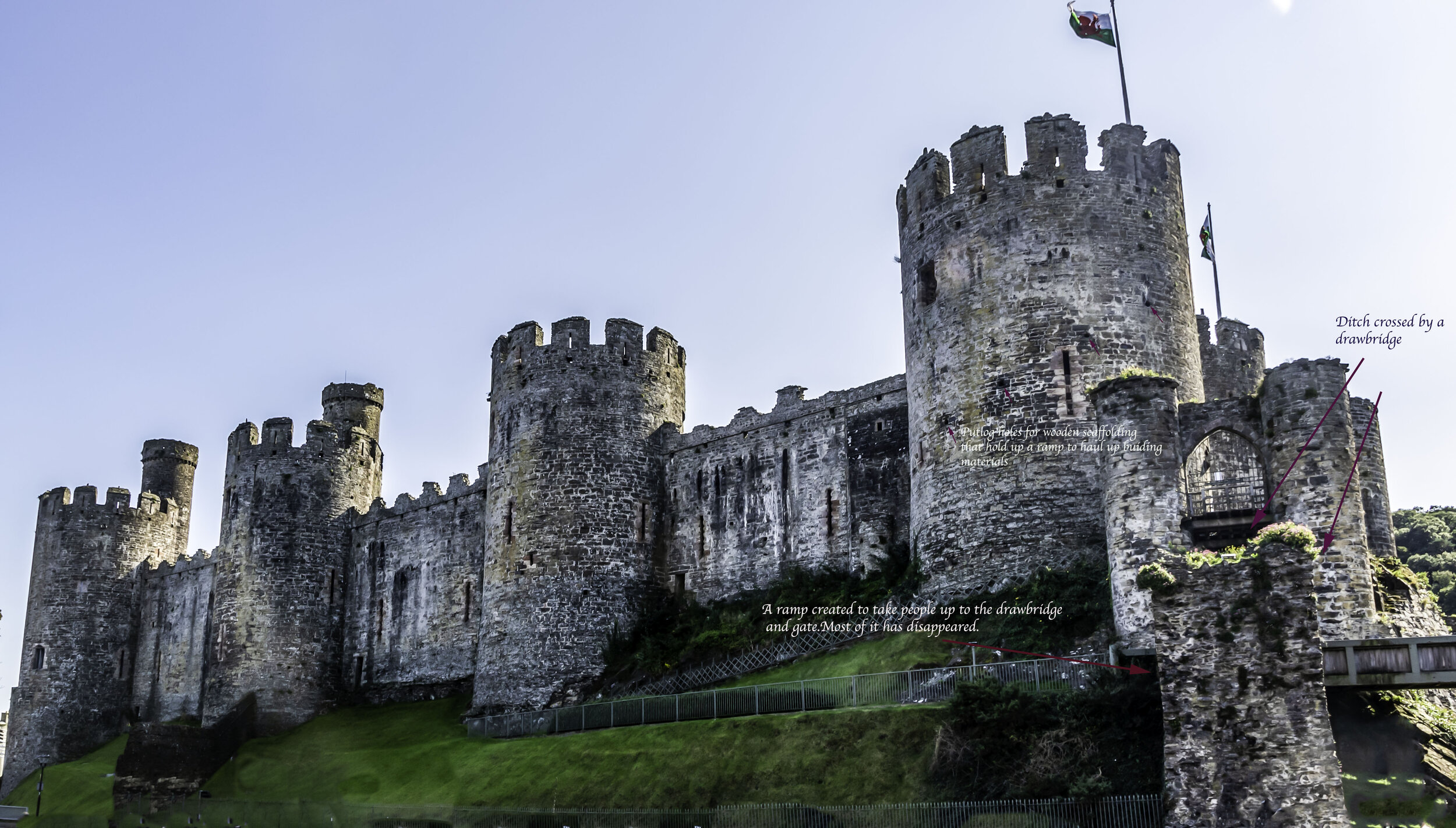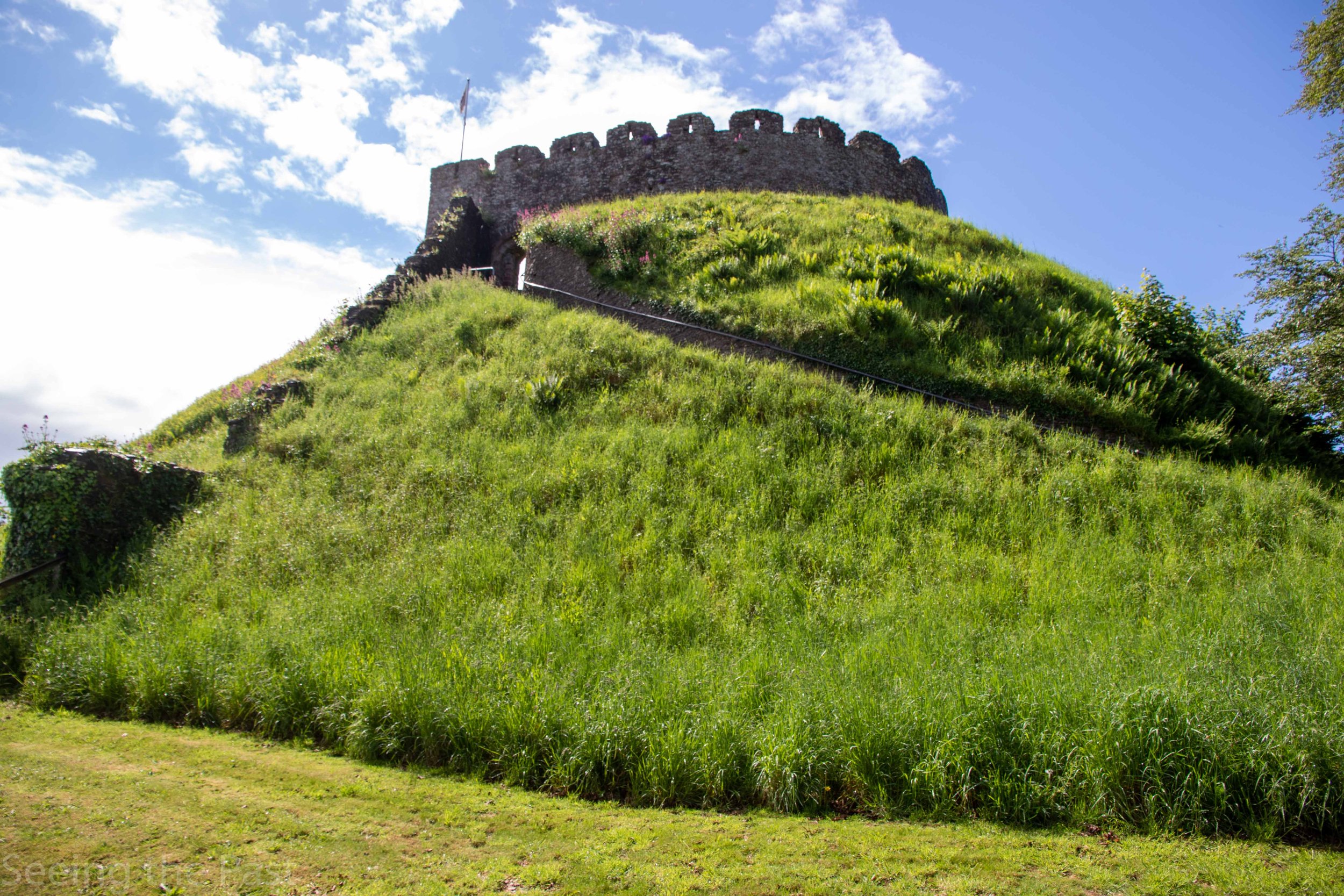Conwy Castle; a stunning castle with a fascinating history.
/Your first view of Conwy Castle as you approach from the east
Menu
Why visit Conwy Castle?
Conwy is simply, a stunning castle with eight massive round towers that dominate the area for miles around. If you are coming by road, your first sight will take your breath away.
The Cadw guidebook states, “Conwy is exceptional not only for the grandeur of its high towers and curtain walls but also for its excellent state of preservation.
Visitors can ascend one of the towers and then make a complete circuit of the battlements.
Built by Edward I and his brilliant assistant, Master James St George, it is one of four castles that make up Edward’s “iron ring” of defence.
Conwy, together with Caernarfon, Harlech and Beaumaris are on the World Heritage List, as a historic site of outstanding universal value.
If you want to discover medieval castles or wish to inspire a child with medieval history, this is a good one to visit. Even better if, over the course of a few days, you visit all four mentioned above. They are all fairly close to each other. Edward’s aim was to have each one a day’s ride from the next one for mutual aid in case of attack.
Drones are not allowed to be flown by members of the public and so we have drawn an aerial view for you to see. How impressive are those towers?
What is there to see at Conwy Castle?
The enticing view of Conwy Castle from the car park. You can see the lower outer walls in the front and the higher inner walls at the back. Archers can be positioned in both places and at the top of the towers making it very hard to get anywhere near. There are plenty of merlons to hide behind and so the archers are not easy targets. On the right hand side is the town wall and in the front you can see the rock outcrop that enables the castle to dominate the surrounding area.
Go around the corner from the photo above and this is the view you get.
I have used photoshop to add to the causeway to explain the entrance. I have also added a black line to show where a drawbridge would have been positioned. Even if an attacker gets across the gap there is still a portcullis in the way! How could anybody successfully attack this castle and get inside? There are several obstacles in the way before the attackers would get to the King’s Chamber.
This is where they would enter from the town.
Rocks or nasty substances such as quick lime could be dropped from the machicolations. Quick lime is a strong alkaline solution that burns skin on contact. If the attackers look up at the wrong moment, it could hit them in the face!
Having got this far, an attacker would be faced with those machicolations and a portcullis plus arrows from archers firing down on them!
The Outer Ward. The entrance in the middle of the photo is where you would have entered the castle into an area known as the outer ward. The castle was split into two separate wards and so if this outer ward was taken, defenders can go into the inner ward to fend off attackers. The king’s private apartments were in the inner ward. Notice the large windows on the left which are key features of the great hall. By looking at the path you can see that the outer ward and, in particular, the Great Hall on the left is banana shaped. The windows facing inwards are designed for light and to look impressive unlike the outside ones.
Looking down the Outer Ward to the Inner Ward. To get to the Inner Ward you have to walk around the well (91 feet deep!) which you can see is surrounded today with railings and go through the Middle Gate. To separate the two wards, another ditch was cut and a drawbridge was operated.
The Inner Ward with the Queen’s chamber top left and the Stockhouse tower on the right. Extra turrets have been built on the four towers of the Inner Ward to give lookouts a greater chance in spotting danger.
The sculpture leaves you in no doubt that this was the King’s Chamber. Here, the king spent a lot of his time working and sleeping.
At the end of the Inner Ward is the East Barbican. This, like the West Barbican, has machicolations but behind its walls are some of the key rooms of the castle.
The town walls wall walk.
Hanging over the side of the town wall.
The end of the Town wall!
You can see here the wall goes up hill, quite a feat of engineering. Plenty of merlons and arrow loops to defend Edward I’s new town and to stop attackers getting anywhere near the castle.
What is the History of Conwy Castle?
For the full story of Edward I and the creation of the “Iron Ring” group off castles see our blog “ Why did Edward I build castles in North Wales?
Conwy Castle came about after Edward I decided that he needed to control Wales once and for all after yet another costly war in 1282-3. His castles were to be accompanied by a new town with town walls that were to be populated by English inhabitants. They were to provide garrison soldiers for the castle, provisions and income from taxation.
Each castle, including Conwy, was to be on the coast so that a besieging army would not succeed ever again. At Conwy, cargo ships could sail right up to a gate unlike at Deganwy which had a great location but that also meant it was difficult to resupply when besieged!
To add to his dominance and be contemptuous of the Welsh leaders, the Cistercian abbey founded by LLwelyn’s grandfather and the last resting place of Llwelyn’s ancestors was to no longer be associated with Conwy. A new abbey was created several miles away and the bones were disinterred and moved elsewhere. The castle and new town were built over where these ancestral relics once lain. To quote Marc Morris in his book, “Castle”, “with calculated callousness, the king literally erased the memory of Llwelyn’s family from the face of the earth!” . To add insult to injury, he also took all of Llewlyns possessions that go with kingship ie his crown, his orb and his sceptre. No Welshman could now demonstrate that he was Llwelyn’s successor.
Thousands of Englishmen were brought in from all over England to complete the building project in little over four years but at a cost of £15,000.
1294 another Welsh uprising
Despite the death of Llwelyn and all of Edward’s plans the Welsh rose once more, this time some of the rebels were led by a distant cousin of Llwelyn called Madog ap Llwelyn and others were locally led. Conwy, together with Edward’s castles at Caernarfon and Harlech were all attacked with the rebels being successful against the unfinished Caernarfon.
Edward used his biggest army to date to suppress this uprising. Thirty-five thousand troops bound for France were now turned around to take on the rebels.
On reaching Conwy Edward had a shock. His supply lines from Chester were severed by the Welsh. Floods also added to his problems leaving Edward short of vital supplies before turning bitterly cold. One story written down by Walter Guisborough tells of Edward and his army being left with only one barrel of wine to drink and that the troops told him that he should have it. To his credit, Edward supposedly said that the wine should be shared equally between them. A good story but sadly there is no evidence to support it. After three months, Edward’s planning, that all of his new castles could be resupplied won the day and he was sent supplies from as far afield as Ireland and Gascony. The supplies were so vast that it resulted in a large amount of leftover grain sprouting in the wet weather and fish left stinking in the harbour.
Despite Edward being trapped in Conwy, his other armies were successful in defeating the rebels once again. One particular place, Anglesey seemed a weak link in his ring of fortresses and as a consequence he decided to build one more fortress that he hoped would be his finest ever, Beaumaris castle.
1399. Richard II surrendered to English rebels at Conwy
In 1399 Henry Bolingbroke aka Henry IV, caused the unpopular King Richard II to flee for his life to Conwy Castle. Whilst there the Earl of Northumberland persuaded him to leave the fortification but then double-crossed him and handed him over to Bolingbroke. This was to be the end of Richard’s freedom and position as King.
1400 Owain Glyn Dwr’s rebellion.
By 1401 this Welsh rebellion led by Owain Glyn Dwr (aka Owain ap Gruffudd) seemed to have run its course but on Good Friday, 1401 two cousins of Glyn Dwr persuaded guards to let them into Conwy castle posing as carpenters and the castle soon fell. They then held out for three months and in so doing “trashed “ the town! The rebellion continued in varying intensity until 1409. Owain was never captured despite large rewards and offers of a pardon and acquired a heroic status whereby one day he would return to defeat the English. Shakespeare also included him in his play, Henry IV part 1.
1646 Conwy and the English Civil War
Although the war between Parliament and the King got underway in 1642, it remained in royalist hands with the only significant action involving Conwy coming when Major General Thomas Mytton attacked it for the parliamentarians in August 1646. He soon took the town but the castle itself was able to withstand him until November when King Charles I gave permission for the royalist garrison to surrender. The defences of Master James St George was still able to keep attacking troops at bay 350 years after he built it. To his credit, it was one of the last three castles involved in the war to be taken.
Essential information
Getting there
By road Conwy via A55 or B5106. There is a car park next to the castle but it is popular! Postcode for Sat Nav. LL32 8AY
By rail 2km/1.6mls Llandudno Junction or 0.6km/0.4mls Conwy Station, on the Crewe-Llandudno Junction/Holyhead route.
By bus 200m/220yards, route No 5, Llandudno-Conwy-Bangor/Caernarfon
By bikeNCN Route No.5 (150m/164yards).
Tickets
contact https://cadw.gov.wales/visit/places-to-visit/conwy-castle. Tickets have to be purchased in advance. We actually saw people turned away because they had not purchased tickets online. No tickets can be purchased at the castle.
Follow us on social media
Articles that may interest you









































Life in medieval times in the north-east of England was one full of danger with a constant threat of war. Viking raids, as well as raids from Scotland, were a regular problem and from time to time kings of England came to this area to consolidate their power. Warkworth was owned by the powerful Percy family for over 600 years who preferred it to the much larger Alnwick castle. The Percy’s were renowned for taking some poor decisions in dynastic wars and losing their lives as well as their properties and titles. One Percy known as “Harry Hotspur” became a popular knight and has been remembered over the years for featuring in Shakespeare’s Henry IV part one.